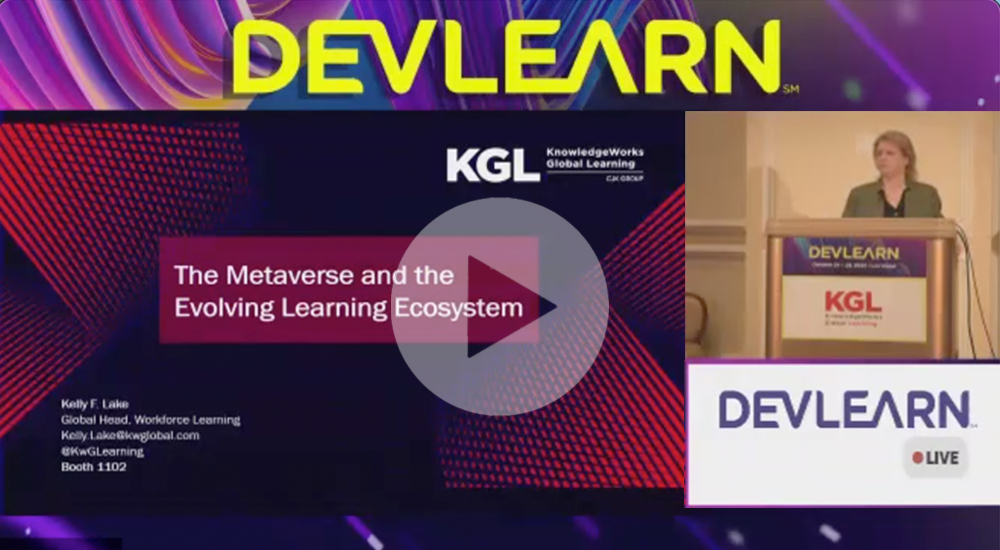Learning through Mixed Reality in the Metaverse

We’ve been hearing and reading a lot about the metaverse, which is a highly advanced version of the internet made of virtual 3D networks. This technology can help create interactive content and immersive learning experiences, facilitating real-time virtual interactions. The L&D industry is gearing up to explore the full potential of the metaverse to deliver personalized online learning solutions to a global audience.
The three immersive learning platforms that the metaverse supports—augmented reality (AR), virtual reality (VR), and mixed reality (MR)—have already started revolutionizing the way in which learners consume training content. Out of these three technologies, MR has a significant role to play in the metaverse because it borrows elements of AR as well as VR, bringing the best of both worlds from the center of the virtual spectrum.
Effective MR learning experiences can be delivered with the help of transparent, head-mounted displays (HMDs). For example, the Microsoft HoloLens offers MR experiences by blending the users’ physical environments with customized, virtual habitats. This is where MR sets itself apart from AR, which can be accessed only with hand-held devices like smartphones or tablets that are limited to the area covered by the screen. MR experiences allow users to interact with a physical object and view relevant virtual information superimposed on the object simultaneously. Similarly, MR allows users to view and interact with 3D holograms of an object using their hands.
For instance, MR-enabled headsets allow users to get familiar with the operations and repairs of complex and heavy machinery by interacting with realistic-looking 3D holograms of these machines. As a result, MR can help deliver effective training in heavy equipment-driven industries, such as manufacturing, automobile, and aviation.
The healthcare industry has also started harnessing the potential of virtual environments through MR-based training that focuses on medical and surgical procedures. These trainings allow students to perform surgeries on holograms of medical imaging, such as a replica of the human eye. Such immersive experiences can help learners mimic the overall feel, hand movements, and precision required in an actual surgery, without the high stress that comes with the consequences of surgical errors. They are able to hone and perfect their skills before moving on to perform procedures on their patients, which helps reduce errors and improve overall patient care.
MR-based learning solutions cater to the training needs across a variety of industries. They allow employees to acquire new skills while posing minimal risk to the health and safety of everyone involved, and don’t cause any physical damage to office property and equipment. Using MR training can help organizations reduce business risks and accident rates, while elevating company-wide safety and productivity levels.
MR is one of the most impactful learning technologies accessible via the metaverse, and its potential is only increasing. The L&D industry continues to research ways to harness MR technology on a large scale and deliver unprecedented, immersive experiences to learners around the globe.
 Be sure to read Part 1 of our blog series, Learning in the Metaverse: The Future of Workforce Development, or view the recording of KGL’s Kelly Lake presenting live from DevLearn 2022, The Metaverse and the Evolving Learning Ecosystem.
Be sure to read Part 1 of our blog series, Learning in the Metaverse: The Future of Workforce Development, or view the recording of KGL’s Kelly Lake presenting live from DevLearn 2022, The Metaverse and the Evolving Learning Ecosystem.
To find out more about how KnowledgeWorks Global Ltd. can create highly interactive, immersive MR trainings for your workforce, please contact: info@kwglobal.com.

